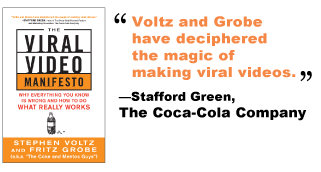by Fritz Grobe
The great film critic Roger Ebert passed away this past week, and several lists of his infamous scathing reviews have been circulating. One of his surprising negative reviews got us thinking about the trap of high production values. Here’s a bit of Ebert’s thumbs down review of Butch Cassidy and the Sundance Kid, starring Paul Newman and Robert Redford:
http://rogerebert.suntimes.com/apps/pbcs.dll/article?AID=/19691013/REVIEWS/910130301/1023
“But unfortunately, this good movie is buried beneath millions of dollars that were spent on ‘production values’ that wreck the show. This is often the fate of movies with actors in the million-dollar class, like Newman. Having invested all that cash in the superstar, the studio gets nervous and decides to spend lots of money to protect its investment.”
After describing scenes that took all sorts of money and effort to film, Ebert continues:
“Director George Roy Hill apparently spent a lot of money to take his company on location for these scenes, and I guess when he got back to Hollywood he couldn’t bear to edit them out of the final version.”
One of the keys to viral video is simple, “low” production values—just press record and do it. Roger Ebert’s review of Butch Cassidy… points out one of the reasons people can be scared of embracing low production values: if you’re spending lots of money on what you think is a great idea, you want to protect your investment by making sure it’s dressed up nicely. That can be a trap in the movies. And for viral video, it’s a particularly dangerous trap.
The desire is strong: let’s get several HD cameras to capture every angle with dolly shots and crane shots; make sure we’ve got the best, most expensive lighting, costumes, and locations; and we’ll definitely spend hours on hair and makeup…
It can take a lot of effort to avoid this trap. You have to keep reminding yourself: let’s use one camera; get rid of that dolly shot; we don’t need a crane shot; let’s get just enough lighting, costuming, hair and makeup so that we look nice but still normal…
Over and over, we’ve seen two reasons for the mistaken use of high production values in viral video:
First, that’s how TV and film do it. Video producers assume that if high production values work there, then that must be what works online. But that’s one of the first and biggest mistakes we dig into in The Viral Video Manifesto. Online video is quite different from TV. On the Internet, simpler is better. High production values get in your way.
Second, if we don’t have a great idea, maybe high production values can make a bad idea look like a great one—or at least make it look like a less bad idea. To that, we say: spend more time developing your idea. Make it great. A viral video should be unforgettable. Take a great idea and capture it on video as simply as possible. Once again, high production values will only get in your way.
Roger Ebert points out a third reason people use unnecessary production values in film and elsewhere: to protect their investment.
We got to see this firsthand when our sponsors brought us to Los Angeles to shoot “The Extreme Sticky Note Experiments.” We didn’t shoot it in our studio in Maine with a single camera and two people, but rather, on a set in the CBS Studios with every resource imaginable and a half dozen actors added to the mix. We also got to see this with “The Coke Zero & Mentos Rocket Car,” which was filmed in a giant blimp hangar in California, with Rob Cohen (The Fast and the Furious) brought in to direct.
With both of these videos, the concepts were strong, and everyone wanted to protect the projects by adding shiny production values. It’s hard to say no to that. It feels safe and smart to use the biggest and the best and the most expensive. But in viral video, you want to let the ideas stand on their own. You want to cut away everything that interferes with the feeling that we are there. Spend your budget on the ideas. Make sure you’ve pushed your concepts all the way to the extreme. Create something extraordinary and unforgettable.
It can be hard to remember that you don’t need all those fancy production values…even when you’ve got Paul Newman and Robert Redford.
Trust the idea. Turn the camera on. Just press record. And do it.




